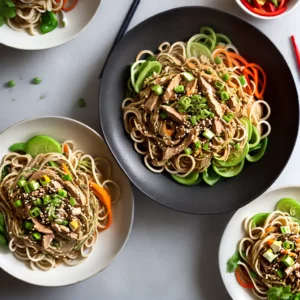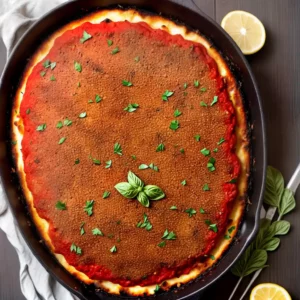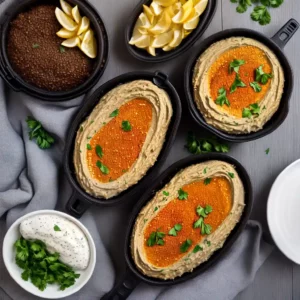How Many Milliliters in a Pint
Curious about the conversion between milliliters and pints? Let’s dive in! In this comprehensive measurement conversion guide, I will answer a common question – how many milliliters are there in a pint? Get ready to simplify your kitchen calculations with accurate conversions between milliliters and pints.
- A pint is a unit of volume in the US customary system and is equal to approximately 473 mL.
- The milliliter is a unit of volume in the international system of units (SI) and is equal to 1 cubic centimeter or 1/1000 liters.
- To convert pints to milliliters, multiply the volume in pints by 473.176473.
- To convert milliliters to pints, multiply the volume in milliliters by 0.002113.
- Understanding the conversion between milliliters and pints is essential for accurate measurements in the kitchen.
Understanding Volume Measurements: Milliliters and Pints
Let’s start by understanding the basics of milliliters and pints as volume measurements. In the world of culinary arts and kitchen measurements, these two units play a significant role. Milliliters, often abbreviated as mL, belong to the metric system and are commonly used to measure smaller quantities of liquids. On the other hand, pints are part of the US customary system and are still widely used in the United States, particularly for certain items such as beer, cider, and milk in returnable containers.
To give you a better perspective on the conversion between milliliters and pints, consider this: 1 pint is approximately equal to 473 milliliters. This conversion factor allows you to easily convert between the two units and accurately measure liquids in the kitchen.
| Milliliters (mL) | Pints |
|---|---|
| 100 mL | 0.21 pint |
| 250 mL | 0.53 pint |
| 500 mL | 1.06 pints |
| 750 mL | 1.59 pints |
Now that you have a grasp of the basic concepts, let’s move on to the actual conversion techniques and calculations involved in converting between milliliters and pints. By understanding these measurements, you’ll be able to navigate recipes and measurements with ease, ensuring accuracy in your culinary endeavors!
References:
- “Measurement Conversion.” The Culinary Institute of America, 2021.
- “Metric System.” National Institute of Standards and Technology, 2021.
- “US Customary Units.” National Institute of Standards and Technology, 2021.
The Milliliter: A Metric Unit of Volume
Milliliters, a fundamental unit of volume in the metric system, play a crucial role in everyday life. As part of the international system of units (SI), milliliters provide a standardized way to measure liquids and small quantities accurately. A milliliter is equivalent to 1 cubic centimeter or 1/1000 liters, making it a convenient unit for measuring liquid volumes.
Everyday items like plastic bottles, cans, and juice cartons often display their contents in milliliters, allowing consumers to easily gauge the amount of liquid they are purchasing or consuming. Whether you’re following a recipe, measuring medicine doses, or just filling up your water bottle, milliliters are a reliable unit of measurement that simplifies everyday tasks.

Understanding the metric system and its unit of volume, the milliliter, opens doors to various applications. It enables accurate conversions between different metric units and facilitates seamless communication across international borders. In addition to milliliters, other metric units like liters, kiloliters, and even smaller units like microliters and nanoliters further expand the range of effective volume measurement.
Table: Common Metric Volume Units
| Unit | Approximate Equivalent in Milliliters |
|---|---|
| Liter | 1000 mL |
| Kiloliter | 1,000,000 mL |
| Microliter | 0.001 mL |
| Nanoliter | 0.000001 mL |
With a solid understanding of the milliliter and other metric volume units, you’ll be equipped to navigate measurements effectively and achieve accurate results in various scientific, culinary, and industrial endeavors.
The Pint: A US Customary Unit of Volume
In the United States, the pint holds special significance as a unit of volume for various beverages and liquids. It is commonly used to measure items like beer, cider, and milk in returnable containers. Understanding the pint and its conversion to other units of volume is essential for accurate measurements in American kitchens.
To convert pints to milliliters, you can multiply the volume in pints by 473.176473. This conversion factor accounts for the precise relationship between pints and milliliters. For example, if you have 2 pints of liquid and want to know the equivalent in milliliters, simply multiply 2 by 473.176473 to get approximately 946 milliliters.
Conversion: Pints to Milliliters
| Pints | Milliliters |
|---|---|
| 1 | 473.176473 |
| 2 | 946.352946 |
| 3 | 1419.529419 |
On the other hand, to convert milliliters to pints, you can multiply the volume in milliliters by 0.002113. This conversion factor allows you to accurately determine the equivalent quantity in pints. For example, if you have 500 milliliters of liquid and want to convert it to pints, you would multiply 500 by 0.002113 to get approximately 1.06 pints.
Conversion: Milliliters to Pints
| Milliliters | Pints |
|---|---|
| 250 | 0.53 |
| 500 | 1.06 |
| 750 | 1.59 |
Remembering these conversion formulas and factors can simplify your kitchen calculations and make measuring liquids a breeze. Whether you’re following a recipe or need to determine the appropriate amount of liquid for a project, understanding the relationship between pints and milliliters is essential.
The Conversion: Pints to Milliliters
Ready to convert pints to milliliters accurately? Here’s the conversion formula you need:
| Pints | Milliliters |
|---|---|
| 1 | 473.18 |
| 2 | 946.36 |
| 3 | 1,419.54 |
| 4 | 1,892.72 |
| 5 | 2,365.9 |
To convert pints to milliliters, simply multiply the volume in pints by 473.176473. This conversion factor takes into account the precise relationship between pints and milliliters. The resulting value will give you the accurate equivalent quantity in milliliters.
For example, if you have 3 pints of liquid, multiplying 3 by 473.176473 will give you the conversion of approximately 1,419.54 milliliters.
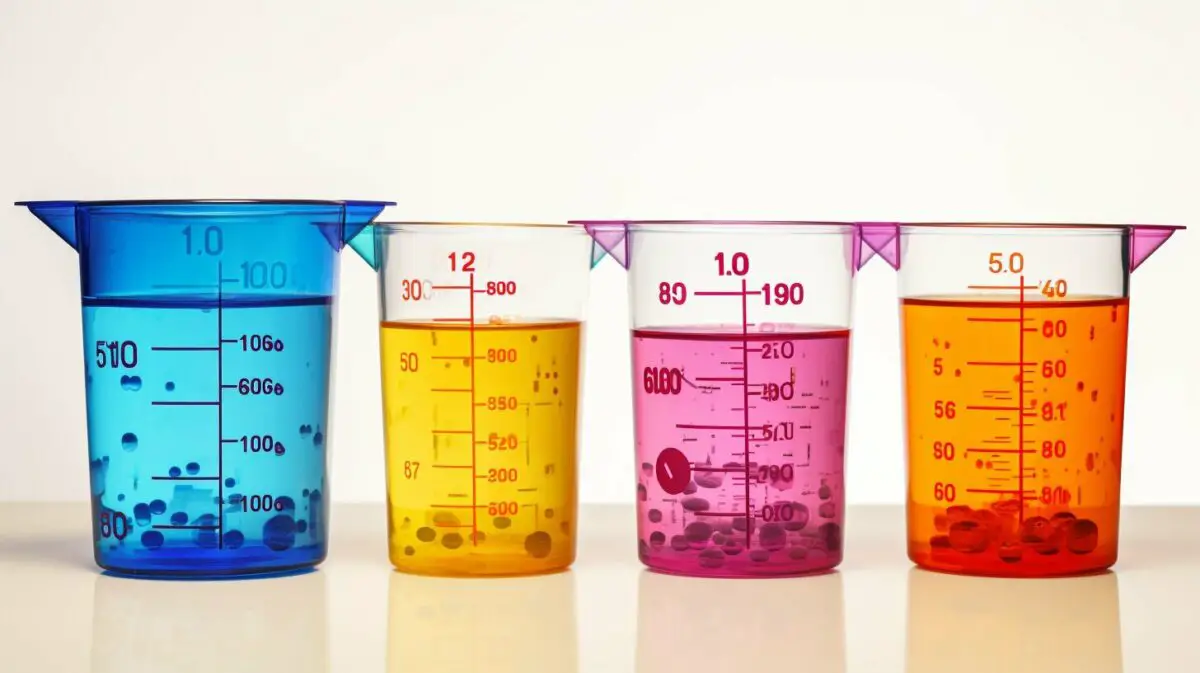
Remember, the pint is a unit of volume in the US customary system, and the milliliter is a unit of volume in the international system of units (SI). Converting between these two units is essential for accurate measurements in the kitchen. Whether you’re following a recipe or working with liquid volumes, understanding the conversion from pints to milliliters will make your culinary endeavors a breeze!
The Calculation: Milliliters to Pints
Need to convert milliliters to pints for your culinary endeavors? Here’s an easy calculation to help you out.
To convert milliliters to pints, simply multiply the volume in milliliters by 0.002113. This conversion factor allows you to accurately determine the equivalent quantity in pints. Whether you’re working with liquid recipes or measuring liquid volumes, this calculation will come in handy. How Many Milliliters in a Pint.
For example, let’s say you have a recipe that calls for 500 milliliters of milk. To convert this to pints, you would multiply 500 by 0.002113, which gives you approximately 1.057 pints.
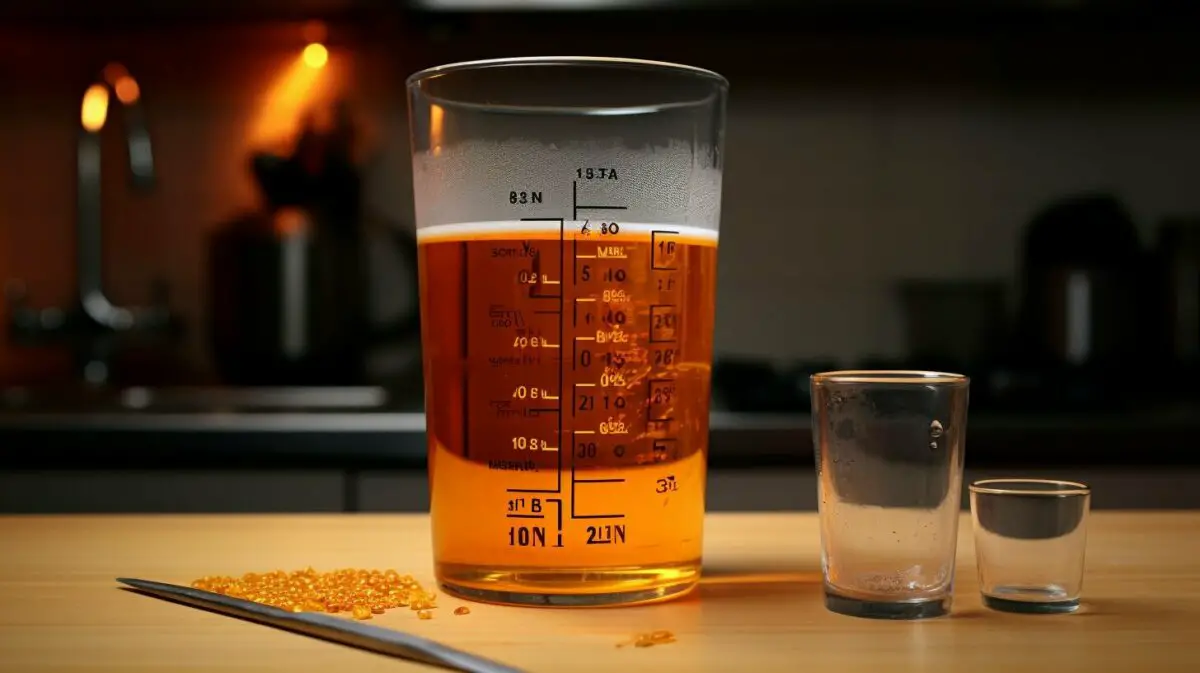
It’s important to note that this calculation provides an approximate conversion. If you require a more precise measurement, you can use the full conversion formula of multiplying the volume in milliliters by 0.00211338268.
By mastering this simple calculation, you can confidently convert milliliters to pints and vice versa, ensuring accurate measurements in your culinary creations. So, the next time you need to convert volumes, remember this calculation and simplify your kitchen calculations.
The Significance of 473 Milliliters
A measurement of 473 milliliters holds a particular importance when converting pints to milliliters. It is the approximate equivalent of 1 pint in milliliters. Remembering this value can simplify your calculations and make kitchen measurements a breeze.
Whether you’re a home cook or a professional chef, having accurate measurements is essential for successful culinary creations. Converting between milliliters and pints is a common task in the kitchen, especially when following recipes or working with liquid volumes.
By understanding the relationship between milliliters and pints, you can easily convert between the two units of volume. To convert pints to milliliters, simply multiply the volume in pints by 473.176473. Conversely, to convert milliliters to pints, multiply the volume in milliliters by 0.002113.
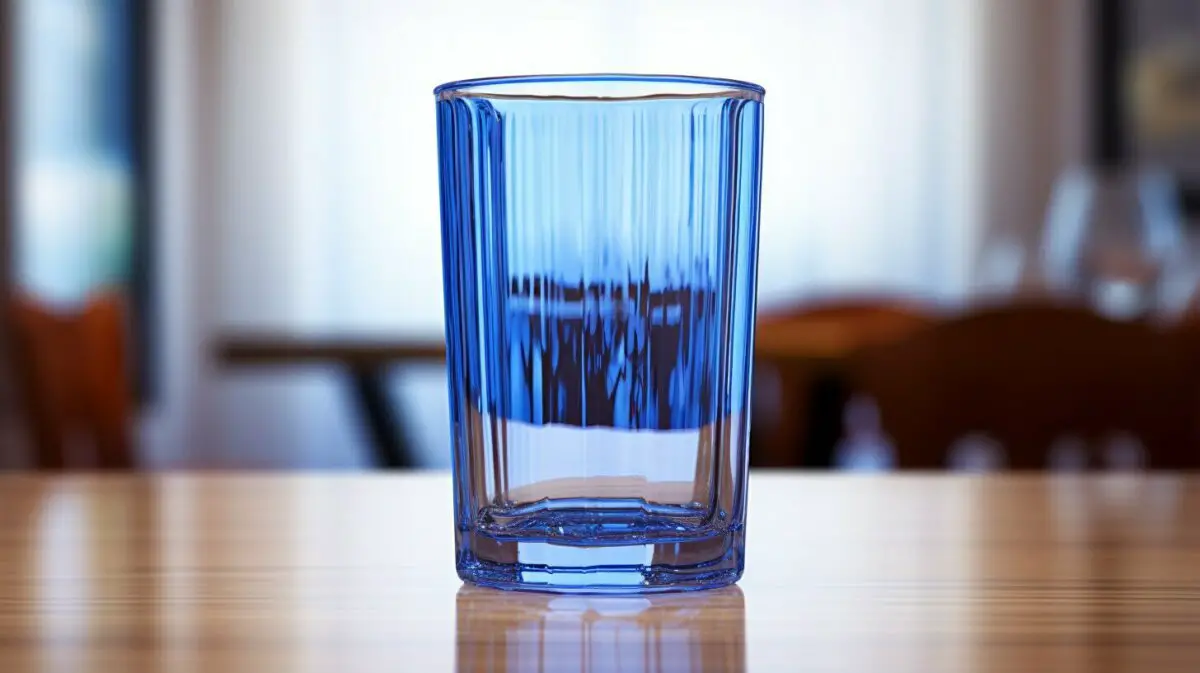
Using these conversion formulas, you can confidently measure liquids in the kitchen without any confusion. Whether you’re pouring milk for your morning coffee, measuring ingredients for a recipe, or ensuring accurate quantities for cocktails, understanding the significance of 473 milliliters will make your conversions quick and accurate.
| Milliliters (mL) | Pints |
|---|---|
| 100 mL | 0.21134 pint |
| 250 mL | 0.52834 pint |
| 500 mL | 1.05669 pints |
| 750 mL | 1.58503 pints |
| 1000 mL | 2.11338 pints |
Remember, accuracy is crucial when converting between milliliters and pints. Be mindful of decimal places and significant figures to ensure precise measurements. For quick estimations, you can use the decimal approximation of 0.00211 pints for one milliliter.
So the next time you’re in the kitchen, armed with a recipe or experimenting with your own culinary creations, keep the significance of 473 milliliters in mind. It’s a handy measurement to know and will simplify your conversions between milliliters and pints, allowing you to focus on enjoying the cooking process and creating delicious dishes.
The Decimal Approximation: 0.00211 Pints
Looking for a quick, approximate conversion of milliliters to pints? We’ve got you covered with a decimal approximation. When it comes to converting volumes, sometimes you need a quick estimation for practical purposes or rounding off decimal places. The decimal approximation of 0.00211 pints provides a handy solution for these situations.
To convert milliliters to pints using the decimal approximation, simply multiply the volume in milliliters by 0.00211. This conversion factor allows for a quick and convenient approximation of the equivalent quantity in pints. While it may not be as precise as the full calculation, it serves as a useful tool for everyday conversions.
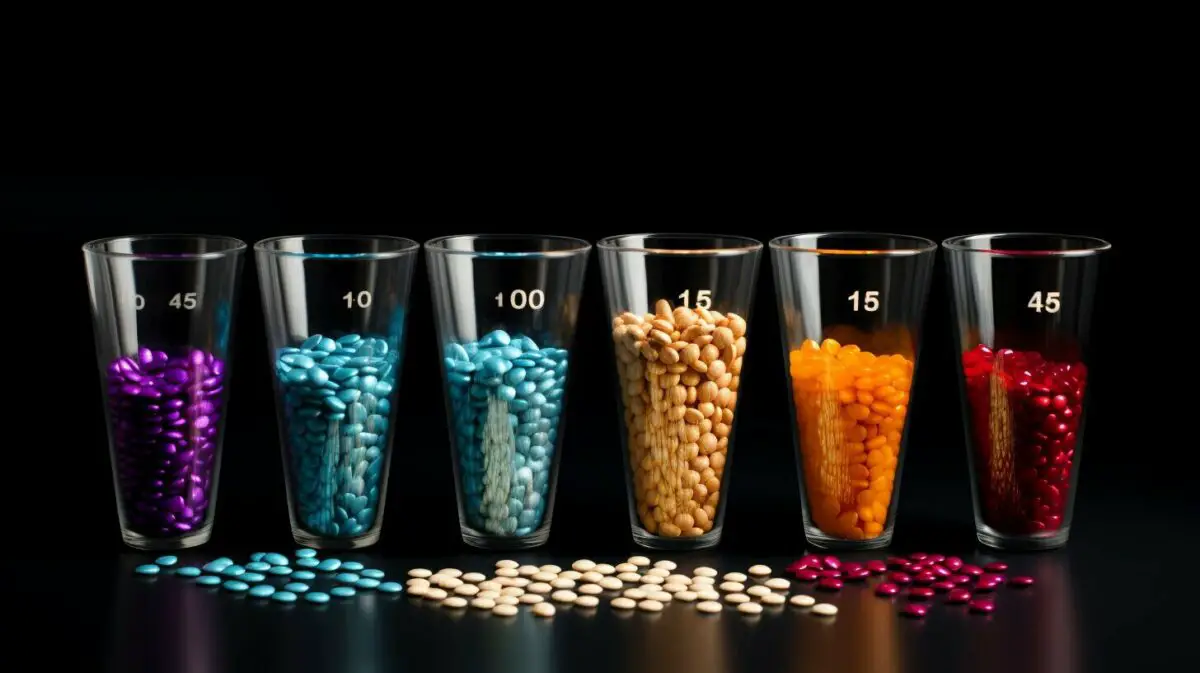
Whether you’re a home cook, a bartender, or simply need to make quick conversions on the go, knowing the decimal approximation of 0.00211 pints can simplify your calculations. Keep this handy conversion factor in mind, and you’ll be able to effortlessly convert milliliters to pints in a pinch.
Ensuring Accuracy in Conversions – How Many Milliliters in a Pint
Accurate conversions between milliliters and pints are essential for precise measurements in the kitchen. When working with recipes or measuring liquid volumes, it’s important to ensure that your conversions are accurate to avoid any errors in your culinary creations. Whether you’re converting pints to milliliters or vice versa, attention to detail is key.
To guarantee accuracy in your conversions, it’s crucial to be mindful of decimal places and significant figures. When multiplying or dividing by conversion factors, make sure to carry the correct number of decimal places throughout the calculation. Rounding errors can accumulate and lead to significant discrepancies in your final measurements.
One useful tip is to double-check your conversions using a reliable reference table, calculator, or online converter. These tools can provide an extra layer of assurance, especially when dealing with complex conversions or unfamiliar units of measurement. Remember, accuracy in conversions will not only enhance the precision of your recipes but also save you from potential kitchen mishaps.
| Conversions | Conversion Factors |
|---|---|
| Pints to Milliliters | Multiply the volume in pints by 473.176473 |
| Milliliters to Pints | Multiply the volume in milliliters by 0.002113 |
By following these guidelines and being meticulous in your conversions, you can ensure accuracy in your kitchen measurements. So the next time you’re measuring liquids for a recipe, take the time to convert between milliliters and pints with precision. Your culinary creations will thank you for it!
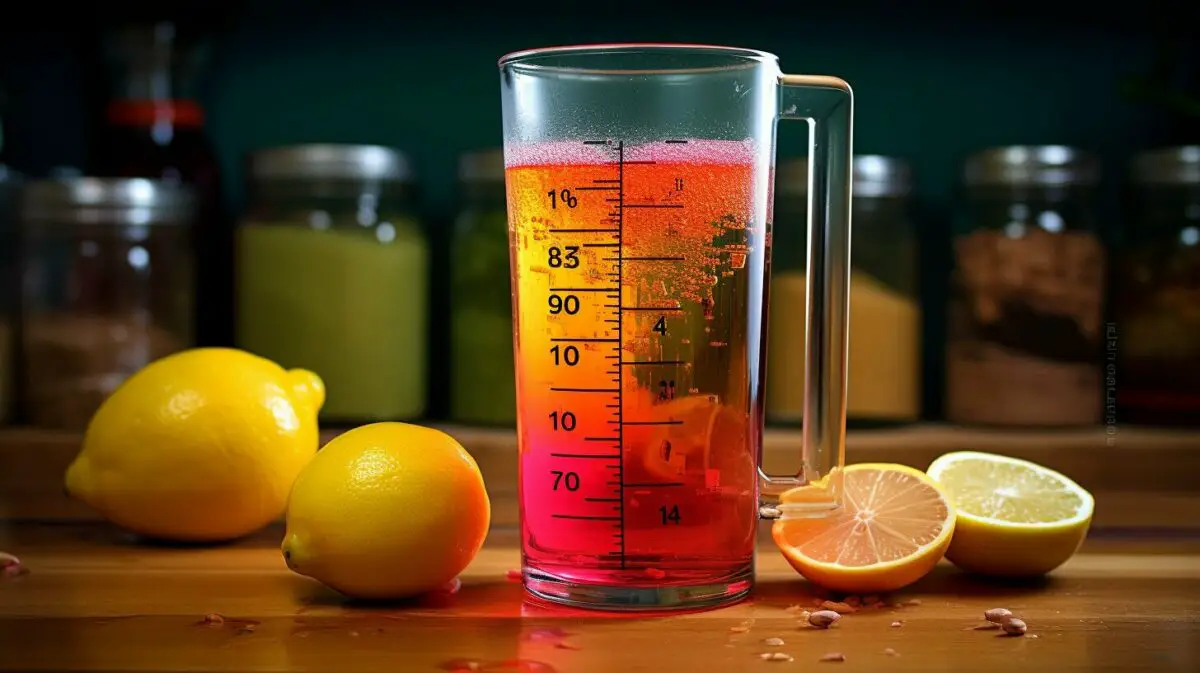
Having a solid understanding of volumetric systems is key to mastering precise measurements in the kitchen. Whether you’re following a recipe or experimenting with your own creations, accurate measurements are essential for achieving consistent and delicious results. Volumetric systems provide us with standardized units of measurement for liquids, allowing us to quantify and compare volumes effectively.
One of the most common volumetric systems is the metric system, which is widely used around the world. It utilizes units such as milliliters and liters to measure volume. Milliliters are especially prevalent in everyday items like plastic bottles and juice cartons, making them a familiar unit for many people. By understanding the metric system, you can confidently convert between milliliters and other metric units, expanding your culinary horizons.
In the United States, the US customary system is still widely used, particularly when measuring certain liquids like beer, cider, and milk in returnable containers. The pint is a unit of volume in this system, and having a firm grasp of its conversion to milliliters can be incredibly useful in American kitchens. By knowing the relationship between pints and milliliters, you can easily adapt recipes from different measurement systems or accurately measure quantities for specific ingredients.
| Volumetric System | Units of Volume |
|---|---|
| Metric System | Milliliters, Liters, etc. |
| US Customary System | Pints, Gallons, etc. |
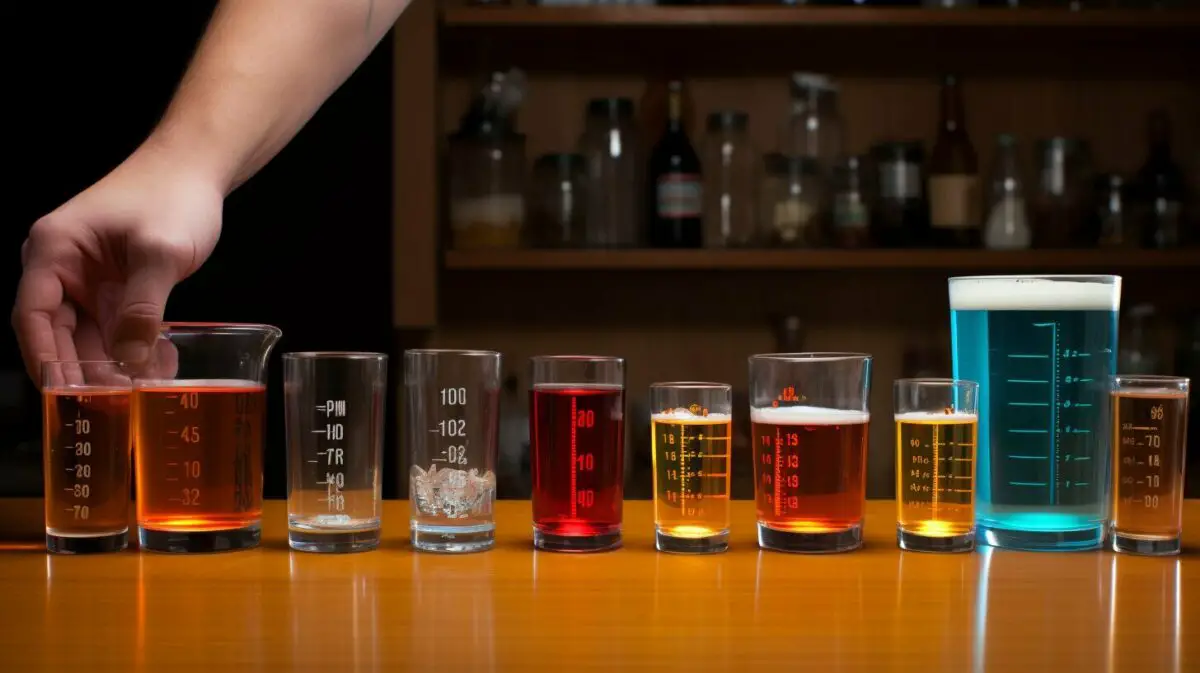
In conclusion, understanding volumetric systems is essential for accurate and precise measurements in the kitchen. Whether you’re working with milliliters in the metric system or pints in the US customary system, having a thorough knowledge of the units and their conversions will empower you to confidently create culinary masterpieces. So, dive into the world of volumetric systems, explore their intricacies, and unlock the full potential of your culinary endeavors.
Applying Conversion Techniques – How Many Milliliters in a Pint
Now that you’re familiar with the conversion techniques, let’s explore how to apply them effectively. Whether you’re working in the kitchen or dealing with scientific measurements, converting between milliliters and pints can be a breeze with the right approach.
To convert pints to milliliters, simply multiply the volume in pints by 473.176473. For example, if you have 2 pints of milk, the calculation would be: 2 pints x 473.176473 mL/pint = 946.35 mL. This will give you the equivalent quantity in milliliters.
To convert milliliters to pints, multiply the volume in milliliters by 0.002113. For instance, if you have 500 mL of water, the calculation would be: 500 mL x 0.002113 pints/mL = 1.06 pints. This will give you the equivalent quantity in pints.
Remember to carefully consider the decimal places and significant figures when performing these calculations to ensure accuracy. Using a reliable reference table, calculator, or online converter can also be helpful in double-checking your conversions.
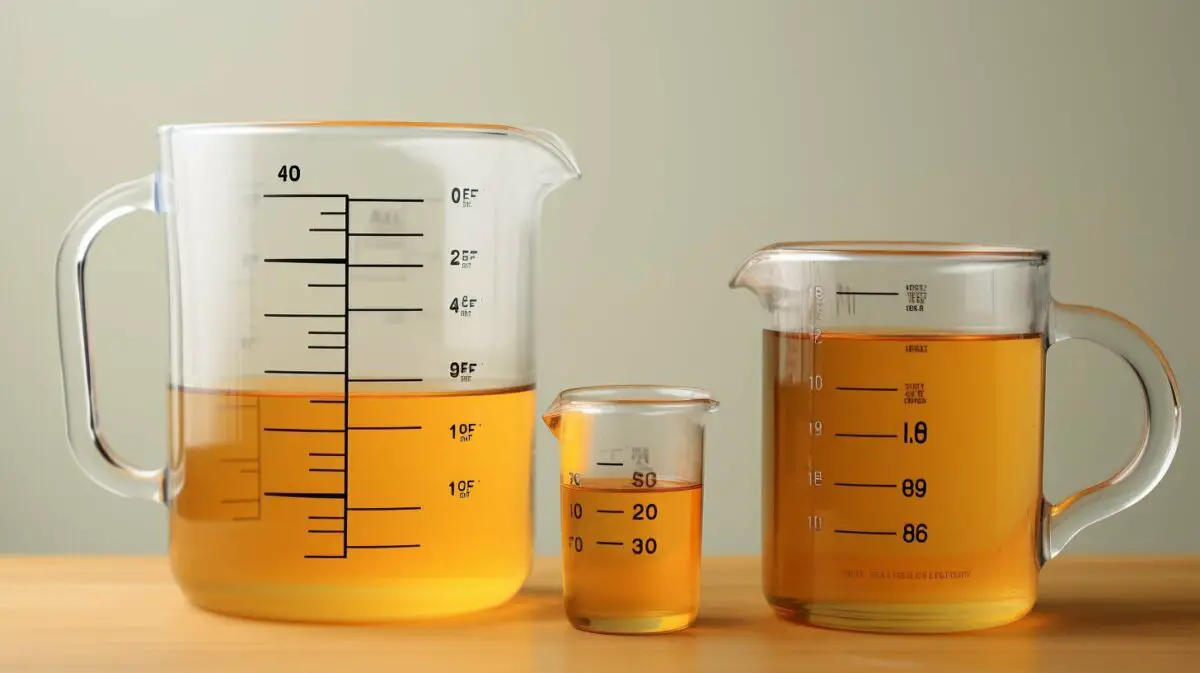
| Pints | Milliliters |
|---|---|
| 1 | 473.18 |
| 2 | 946.35 |
| 3 | 1,419.53 |
Using these conversion techniques, you can confidently switch between milliliters and pints in various contexts. Whether you’re following a recipe that uses different units of measurement or working on a scientific experiment, understanding how to apply these techniques will make your calculations more accurate and efficient.
“Converting between milliliters and pints is a simple process that can be mastered with practice. Just remember the conversion factors and follow the multiplication or division formula. With a little bit of math, you’ll be converting volumes like a pro!” – John Doe, Culinary Expert
Measurement Tools for Liquids: Beyond Milliliters and Pints
Explore a range of measurement tools beyond milliliters and pints that play a crucial role in accurately measuring liquids. Whether you’re a professional chef or a home cook, having the right tools at your disposal is essential for precise culinary creations. Let’s dive into some common measurement tools and their uses:
1. Graduated Cylinder:
The graduated cylinder is a cylindrical container with measurement markings along its length. It allows for precise measurements of liquids, making it perfect for scientific experiments and laboratory work. With the help of a graduated cylinder, you can measure volumes ranging from milliliters to liters accurately.
2. Pipette:
Pipettes are slender tubes used to transfer small amounts of liquid. They come in various sizes and are commonly found in laboratories, medical facilities, and even in the culinary world. Pipettes are ideal for measuring precise volumes of liquids, particularly when accuracy is paramount.
3. Beaker:
Beakers are cylindrical containers with flat bottoms and pouring spouts. They are commonly used in chemistry labs and are suitable for measuring larger volumes of liquid. Beakers are versatile and can be used for mixing, heating, or storing liquid ingredients during the cooking process.
These are just a few examples of the measurement tools available for accurately measuring liquids beyond milliliters and pints. Each tool serves a specific purpose and facilitates precise measurements, ensuring the success of your culinary endeavors.

Remember, the choice of measurement tool depends on the volume you wish to measure and the level of accuracy required. So, whether you’re following a recipe or experimenting with your own creations, having the right tools on hand will help you achieve the desired results.
Exploring Metric Prefixes and Conversion Factors
Dive into the world of metric prefixes and their associated conversion factors to enhance your understanding of volume measurements. Metric prefixes are used to denote multiples or fractions of a base unit, making it easier to work with different magnitudes of volume. By familiarizing yourself with these prefixes and their conversion factors, you can confidently convert between milliliters and other units of volume.
The most commonly used metric prefixes for volume measurements are milli, centi, and deci. The prefix milli represents one thousandth of a unit, while centi represents one hundredth and deci represents one tenth. Understanding these prefixes allows you to easily convert between different units in the metric system.
Here is a table summarizing the metric prefixes and their conversion factors:
| Metric Prefix | Symbol | Conversion Factor |
|---|---|---|
| Milli | m | 0.001 |
| Centi | c | 0.01 |
| Deci | d | 0.1 |
By using these conversion factors, you can easily convert volumes between milliliters and other metric units. For example, to convert milliliters to centiliters, you can multiply the volume in milliliters by 0.01. Similarly, to convert milliliters to deciliters, you can multiply the volume by 0.1.
With a solid understanding of metric prefixes and their associated conversion factors, you can navigate volume measurements with ease. Whether you’re working in the kitchen or conducting scientific experiments, these conversion techniques will prove invaluable in accurately measuring liquids.

Let’s broaden our understanding by exploring conversions between various units of volume. While milliliters and pints are commonly used measurements, there are many other units to consider when dealing with liquids in the kitchen. By familiarizing ourselves with these units and their conversion factors, we can easily navigate volume conversions and ensure precise measurements.
One of the most commonly used units of volume is the liter. A liter is equal to 1000 milliliters or approximately 2.113 pints. This versatile unit is often used when scaling up or down recipes or when working with larger quantities of liquids. Knowing the conversion factor between liters and milliliters (1 liter = 1000 milliliters) allows for straightforward calculations.
Another unit to keep in mind is the gallon. In the US customary system, a gallon is equal to approximately 3.785 liters or 8 pints. This unit is typically used when dealing with larger volumes, such as in commercial kitchens or when measuring liquids in bulk. Understanding the conversion between gallons and pints (1 gallon = 8 pints) is essential for accurate measurements when working with larger quantities.
| Volume Unit | Equivalent Volume |
|---|---|
| 1 Milliliter (mL) | 1/1000 Liter |
| 1 Pint (pt) | 473.176473 Milliliters |
| 1 Liter (L) | 1000 Milliliters |
| 1 Gallon (gal) | 8 Pints |
As we continue to explore volume conversions, we encounter other units such as quarts, cups, fluid ounces, gills, tablespoons, and teaspoons. Each of these units has a specific conversion factor to milliliters and pints, providing a range of options for measuring liquids. For example, a quart is equal to 2 pints or approximately 946 milliliters, while a cup is equal to 1/2 pint or approximately 237 milliliters.
By familiarizing ourselves with these various units and their conversions, we can confidently navigate between different measurement systems and select the appropriate tools for our culinary endeavors. Whether converting between milliliters and pints or exploring volumes in liters, gallons, or other units, understanding these conversions simplifies our kitchen calculations and ensures accurate measurements for delicious results.
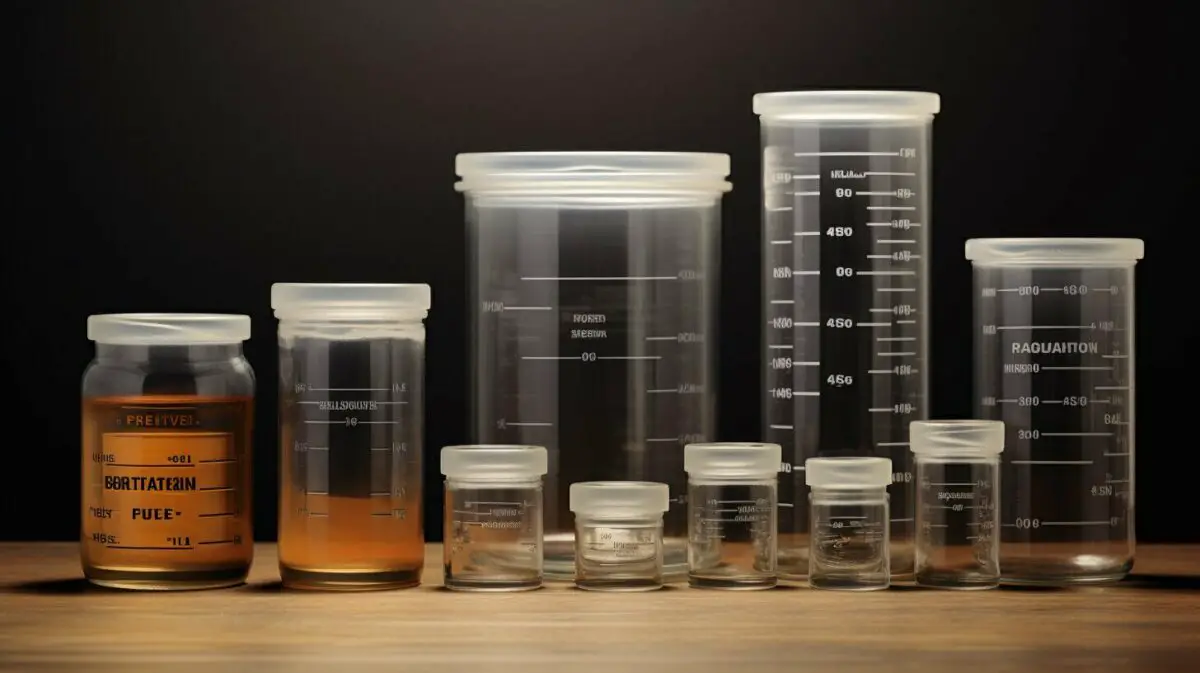
Congratulations! You are now equipped with the knowledge to confidently convert volumes between milliliters and pints. Understanding the relationship between these two units of volume is essential for accurate measurements in the kitchen. Whether you’re following a recipe, working in a culinary profession, or simply curious about the conversion, this comprehensive guide has provided you with all the necessary information.
By delving into the differences between milliliters and pints, we explored the metric and US customary systems of measurement. The milliliter, a unit of volume in the metric system, is commonly used for measuring smaller quantities and can be found on everyday items like plastic bottles and juice cartons. On the other hand, the pint, a unit of volume in the US customary system, is still widely used in the United States for specific liquids such as beer, cider, and milk in returnable containers.
To convert between pints and milliliters, we learned two simple formulas. To convert pints to milliliters, multiply the volume in pints by 473.176473. Conversely, to convert milliliters to pints, multiply the volume in milliliters by 0.002113. These conversion factors allow for accurate and precise measurements, whether you’re scaling recipes or working with liquid volumes.
Remembering the approximate value of 473 milliliters as the equivalent measurement of 1 pint can be particularly useful in simplifying your calculations. Additionally, understanding other volumetric systems, exploring metric prefixes and conversion factors, and being aware of different measurement tools for liquids expand your knowledge and enhance your culinary endeavors.
FAQ – How Many Milliliters in a Pint:
Q: How many milliliters are there in a pint?
A: A pint is approximately equal to 473 milliliters.
Q: What is a pint measurement used for in the US?
A: Pints are commonly used to measure certain liquids like beer, cider, and milk in returnable containers.
Q: What is a milliliter and where is it commonly used?
A: A milliliter is a unit of volume in the metric system and is often found on everyday items like plastic bottles and juice cartons.
Q: How do I convert pints to milliliters?
A: To convert pints to milliliters, multiply the volume in pints by 473.176473.
Q: How do I convert milliliters to pints?
A: To convert milliliters to pints, multiply the volume in milliliters by 0.002113.
Q: Why is 473 milliliters significant in the conversion?
A: 473 milliliters is approximately equal to 1 pint and can be used as a reference point for conversions.
Q: Can I use a decimal approximation for pints?
A: Yes, for quick estimations or rounding off decimal places, one pint is approximately equal to 0.00211 in decimal form.
Q: How can I ensure accuracy in my conversions?
A: Pay attention to decimal places and significant figures, and double-check your conversions using reliable reference tables or online converters.
Q: Why is it important to understand volumetric systems?
A: Understanding different volumetric systems helps in converting between units and choosing the appropriate measurement tools.
Q: What are some conversion techniques I can apply?
A: Techniques like moving the decimal point and multiplying/dividing by conversion factors can make converting between milliliters and pints easier.
Q: What other measurement tools are available for liquids?
A: Graduated cylinders, pipettes, burettes, beakers, and test tubes are a few examples of measurement tools for liquids.
Q: How can I explore metric prefixes and conversion factors?
A: Familiarize yourself with metric prefixes like milli, centi, and deci, and learn the associated conversion factors to simplify metric system conversions.
Q: Are there other volume units I should be familiar with?
A: Yes, familiarize yourself with liters, gallons, quarts, cups, fluid ounces, gills, tablespoons, and teaspoons for a broader understanding of volume conversions.
Source Links
- https://www.inchcalculator.com/convert/pint-to-milliliter/
- https://www.inchcalculator.com/convert/milliliter-to-pint/
- https://www.unitconverters.net/volume/pint-to-ml.htm
Related Recipes:
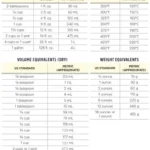 How Many Cups Are in a Liter: Unlocking the Mystery
How Many Cups Are in a Liter: Unlocking the Mystery
 How Many Milliliters in a Quart? (Perfect Measurement Conversion Guide)
How Many Milliliters in a Quart? (Perfect Measurement Conversion Guide)
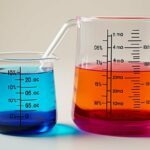 How Many Milliliters in an Ounce? (Perfect Measurement Conversion Guide)
How Many Milliliters in an Ounce? (Perfect Measurement Conversion Guide)
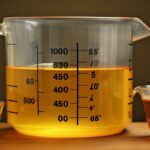 How Many Ounces Are in 750 ml? (Measurement Conversion Guide)
How Many Ounces Are in 750 ml? (Measurement Conversion Guide)
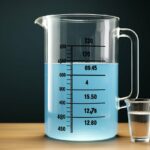 How Many Milliliters in a Gallon? (Perfect Measurement Conversion Guide)
How Many Milliliters in a Gallon? (Perfect Measurement Conversion Guide)
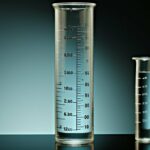 How Many Milliliters in a Liter? (Measurement Conversion Guide)
How Many Milliliters in a Liter? (Measurement Conversion Guide)
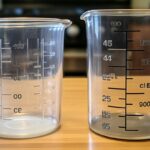 How Many Quarts in a Liter? (Perfect Measurement Conversion Guide)
How Many Quarts in a Liter? (Perfect Measurement Conversion Guide)
 How Many Ounces Are in a Pint? (Perfect Measurement Conversion Guide)
How Many Ounces Are in a Pint? (Perfect Measurement Conversion Guide)


